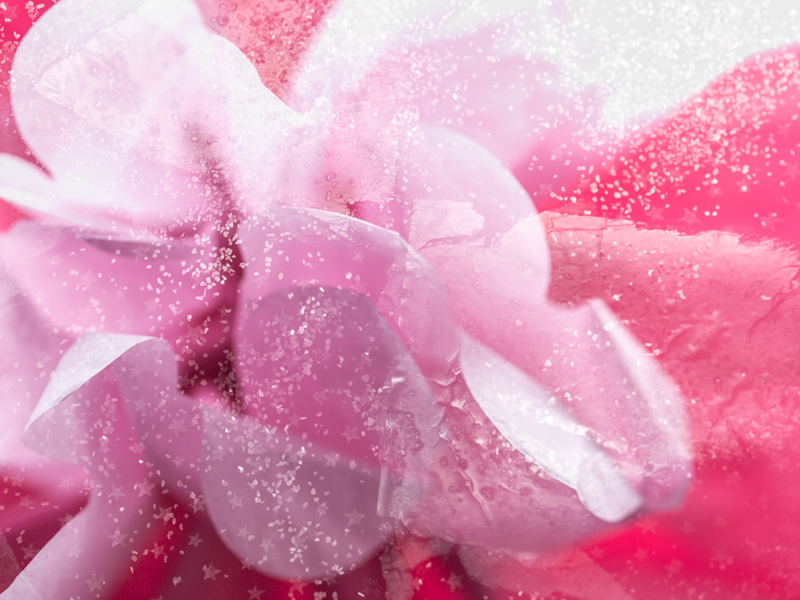Paradox
The Response: Paper Flower with Stars, No. 1; a Flower as a World —Cheryl
She [Georgia O’Keeffe] painted flowers as no one else painted them: in enormous close-up. You feel the flowers pressing against your face; you smell them; you sense the silky petals. The flowers are partly realistic … and partly abstract. … The approach is deeply sensuous, and critics at the time did not quite know what to make of it. Even those who admired her used the term “sexual.” O’Keeffe, a redoubtable woman, found this very annoying. Her answer was: “I made you take the time to look at what I saw. And when you took time to really notice my flower, you put all your own associations with flowers onto my flower.” She kept her vision focused, insisting on seeing a flower as a world. —Sister Wendy Beckett on O’Keeffe’s “White Rose with Larkspur No. 2” in Sister Wendy’s American Collection.
I love reading/listening to what Sister Wendy has to say about art. She knows the history, she understands the techniques and media, but most importantly, she shares what she feels and articulates what occurs in her own mind. I don’t have to agree with her assessments, but I usually understand why she makes them. Sister Wendy has taught me, perhaps more than anyone else, that conversation between me and a work of art (an image, a sculpture, a poem, a book) is—in the end—the only one that really matters, especially if it leads me to a deeper understanding of the world, the humanity around me, and the Creator who loves it all.
Everything about art (and that includes literature) is paradoxical, and that’s what makes it exciting and endlessly fascinating. Why are the stories that leave me with questions the best ones? Why do I share my work with others when I seldom feel it is good enough? Why does everyone else praise the images that leave me cold? Why do I turn to macros, multiple exposures, and blurry forms when I am looking for clarity?





It’s not the answers that matter — it’s asking the right questions. ; ) (Or at least I read that somewhere once…)
Did you know that O’Keefe was married to Alfred Stieglitz? This is a fascinating documentary to watch: https://www.youtube.com/watch?v=PNn6H4SEgQc
I did know about Georgia and Alfred. Let me just say that of the two, I like her better.